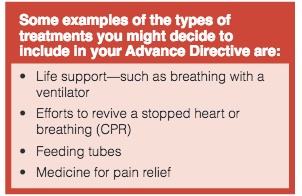
by Ashla Anderson, Development Program Coordination, Hospice of the Upstate, Inc.
Everyone has the right to make personal decisions about their health care at the end of life. But what happens when you are no longer able to make those decisions on your own? An Advance Directive is a plan outlining your specific healthcare choices in the event you couldn’t communicate your wishes to those around you. It allows for us to plan ahead and give a gift that puts ourselves and family members at peace in such a stressful time.
Research has shown that only about 30% of Americans have completed an Advance Directive defining their choices for end of life care. In the absence of an Advance Directive families are torn and left with difficult decisions. During these situations, families find it hard for them to let go and will continue treatment when it is not likely to restore the health of their family member. An Advance Directive is the predetermined plan of action before the crisis occurs.
In determining your wishes, think about your values and personal beliefs. Would you want treatment only if a cure is possible? Would you want palliative care to ease pain and discomfort? Although you can’t predict what medical situations will arise, being prepared allows for our loved ones to enjoy and cherish the remaining time we have left.
An Advance Directive is most commonly found in the form of the Healthcare Power of Attorney. It allows for you to select a Health Care Agent who speaks on your behalf and is your voice for healthcare decisions. This directs your Agent to fulfill your wishes should you not be able to communicate. Your Advance Directive is only put into place when two physicians have certified you are no longer able to communicate.
It’s important to know that as your health or perspective on life changes, you are able to change your Advance Directives at any time. Be sure to communicate with your family and Health Care Agent of your new revisions to your Advance Directives.




